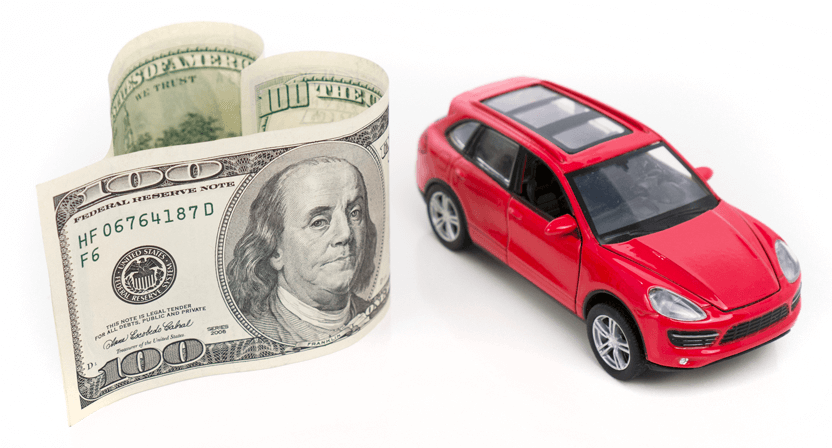The value of your car isn't the only determining factor. Learn more about the many other variables that come into play when shopping for full coverage auto insurance and tips for controlling your costs.
What is Stacked Insurance Coverage?
Stacked insurance coverage is associated with the Uninsured Motorist Bodily Injury (UMBI) and the Underinsured Motorist Bodily Injury (UIMBI) coverage on your auto policy.
The UMBI coverage pays for medical expenses from an auto accident when the other driver is at-fault and uninsured. The UIMBI coverage in turn pays for medical expenses in the event that the at-fault driver has insurance, but the value of your Bodily Injury Liability (BI) claim exceeds the amount of BI coverage on the at-fault driver’s policy.
Find Cheap Full Coverage Auto Insurance
Benefits of Stacked Coverage
To stack coverage, you have to own more than one vehicle. Stacking your UMBI and UIMBI coverage allows you to increase the amount of the UMBI or UIMBI coverage that is available to you by utilizing coverage from multiple vehicles on your auto policy instead of just one.
The UMBI and UIMBI coverage on your auto policy typically indicates a per person maximum, and a per accident maximum limit: $100,000/$300,000 for example. With this type of coverage, you would have access to coverage of a maximum of $100,000 per person, up to $300,000 per accident for an UMBI or UIMBI claim.
If you own two vehicles, your coverage limit increases to $200,000/$600,000 when stacked, based on our example. If you own three vehicles, it increases to $300,000/$900,000. Stacking provides you with a larger pool of money to dip into if you need it.
Does Your Auto Policy Qualify for Stacked Coverage?
Whether or not your auto policy qualifies for stacked coverage depends on state law and your auto policy contract. Check with your insurance company to verify if you have access to stacked coverage. Your insurance representative is required to discuss this option with you, if available, when you initially set up and purchase your auto policy.
As long as your insurance carrier, in your state, offers stacked coverage, you can choose to select or decline stacked coverage on your policy. You should be aware that as with all coverage options on your auto policy, having access to more coverage means that you have to pay a higher premium as a result.
Intra-Policy Stacking and Inter-Policy stacking
You may also come across terms such as intra-policy and inter-policy stacking. We already established that availability of stacking depends on state law and the way insurance carriers write their auto contracts. If you have multiple vehicles, the insurance carrier may issue one policy that lists multiple vehicles, or the carrier may issue a separate policy for each vehicle. Intra-policy stacking is the stacking of UMBI or UIMBI coverage on a single policy with multiple vehicles. Inter-policy stacking is the stacking of coverage between multiple policies.
Coverage Limitations and Exclusions
Even if your auto policy allows stacking of coverage, it may contain stipulations about how that coverage is applied. Stacking of coverage is usually applicable to the policyholder and to the policyholder’s immediate family members, if those family members reside in the same household. Your auto policy contract may exclude stacking of coverage for all other people if they are not resident family members of your household.
Let us use the following example: the UMBI coverage on your policy is in the amount of $100,000/$300,000. If you and your cousin (who lives at a different address) get into an accident with an uninsured motorist, you would receive the benefit of the stacked coverage and your cousin would not. If you own two vehicles, you would have access to coverage in the amount of $200,000/$600,000 but your cousin would only have access to the unstacked coverage limit of $100,000/$300,000.
Another limitation that insurance carriers often place in their auto contracts is the number of times you can stack the UMBI and UIMBI coverage. If the policy indicates that you can stack coverage up to three vehicles and you have six vehicles insured on your auto policy, you can only stack the coverage up to the three-vehicle limit.
Things to Consider
The purpose behind buying an auto insurance policy is to protect you financially in case of a loss. The UMBI and UIMBI coverage pays for medical expenses when the other driver is at-fault for the accident but lacks sufficient insurance coverage: it is your safety net.
Reputable insurance agents do their best to help you make educated decisions when choosing coverage, but it is ultimately up to you as the vehicle owner to make the final coverage selections. Review your policy often, especially when you experience or anticipate major life events such as moving, purchasing property, getting married, or adding children to your auto policy.
Most people purchase their first auto policy as a college student or shortly thereafter. At this stage of life, money is tight and the focus is on affordable coverage. Choosing to carry unstacked coverage is an inexpensive option to meet budget goals. Reviewing your auto policy in its entirety every couple of years, or during major life evens, will ensure that you make changes to your policy to suite your immediate needs.




